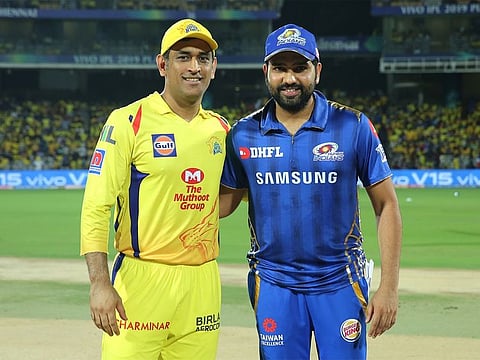IPL 2020 in UAE: Cricket in a bio bubble, but the game and lure are not sanitised
Apart from politics and Bollywood, it is cricket that is India’s lifeblood

Cricket in empty, sanitised stadiums, without the drama and dirt of victory or defeat? ‘That’s not quite cricket!’ I am tempted to say. It certainly seems like that as I tune in to the opening contest between the two top teams in the Indian Premier League (IPL), Mumbai Indians and Chennai Super Kings.
The Sheikh Zayed Stadium, Abu Dhabi, is totally unoccupied and utterly silent, despite the fake pre-recorded background sound being played on TV. There’s no roar of live anticipation or applause as a ball smashes into the boundary or is hit high only to be caught at long off. Having grown up both watching and playing the game, I can’t but help wonder about the future of cricket as an unprecedented Indian Premier League season begins in a bio-bubble.
As much a spectator as team sport, what will cricket be like without the incessant background noise of cheering and jeering, without supporters in outlandish costumes or decorations, without the energy of crowds and rival fans, without the agony and ecstasy, the hopes, dreams, and disappointments of live audiences, without the spit and polish of seamers or sledging of players jostling and heckling each other at close quarters?
Apart from politics and Bollywood, it is cricket that is India’s lifeblood. It is India’s national game and favourite pastime. The natural love that Indians have for the game can’t be explained except by the strange truth, as Ashis Nandy put it, that ‘Cricket is an Indian game accidentally discovered by the English.’ Indeed, to cite the title of the book where this memorable expression occurs, Indians seem to have mastered the ‘Tao of Cricket.’
After the end of empire, the centre of gravity of the imperial gentleman’s game also shifted. Instead of fading away after the demise of colonialism, cricket only became more deeply entrenched in its most populous colonies in the Indian sub-continent. South Asia is home to as many as four formidable teams, India, Pakistan, Sri Lanka, and Bangladesh. What is more, players of sub-continental origins play for England, West Indies, South Africa, Australia, New Zealand, and Kenya. No surprise that for decades now, UAE, with its huge expatriate population from South Asia, has become the favourite hosting and hunting ground of the sport.
Perhaps we have taken so much to cricket because it is one game where size is not the only thing that matters, where finesse is as important as force, where both brain and brawn come into play. Spin is as crucial as pace, fielding as valuable as bowling, slicing and cutting as important as hooking and pinch hitting, and keeping wickets, as the great, recently retired ‘Mahi’ (Mahendra Singh Dhoni) demonstrates, actually lead to match-winning. What is more, we have taken to every form and format of the game, from the five-day long haul of test cricket, to the limited 50 overs game, to its latest avatar, T20.
The last, with its sudden twists and turns, dramatic reverses and unexpected finishes, has come be most lucrative form, especially in current busy times. In this format, cricket is as much entertainment as it is sport. And despite being in a bio bubble, all the other elements of the game are present, the weather, the pitch, the strategy, and, above all, the artistry and aggression of the players, I discover as I find myself watching the opening overs. Oh! Rohit Sharma, Mumbai Indians’ captain and opening batsman is just out. It’s an easy catch, lobbed straight to Sam Curran. Leg spinner Piyush Chawla, just brought in after a pace attack, has scored. And, yes, the irritating ads have just come on after the dismissal. It’s business as usual at least in this department of the game.
Eventually, if the pandemic persists, like any other soap opera or sitcom, international cricket too will be increasingly dematerialised and digitised, staged for TV, complete with virtual audiences, background sound, and life-like computer stimulation and animation. Who knows, even real players might be dispensed with, erasing the difference between computer gaming and the real game.
For the first time, in thirteen super successful seasons, IPL has both started and will end outside India due to the COVID-19 pandemic. Without a live audience, cheerleaders, half time analysis, roving reporters on the ground, and many missing features, it’s not quite the same experience.
Yes, I switched off after a while. Yet, I couldn’t stop myself from staying up, checking the score from time to time. I did want to see how this first tie of the tournament ended. Around 11:20 PM IST, CSK won, with four balls and five wickets to spare.
Despite the bio bubble, much diminished excitement, and above all, the absence of spectators, the game, as they say, must go on.
Sign up for the Daily Briefing
Get the latest news and updates straight to your inbox









